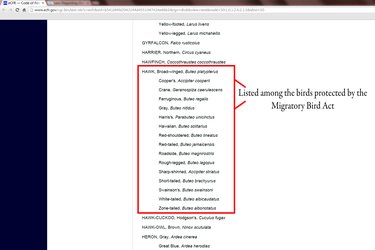“A hawk’s cry pierced the tranquil dawn, shattering the serenity of my backyard. As the majestic bird circled overhead, its piercing gaze seemed to scrutinize our every move. A sense of unease washed over me – these magnificent predators were making my sanctuary their hunting ground.”

Image: thebackyardpros.com
Hawks are awe-inspiring creatures, but their presence in your yard can bring unwanted stress and potential danger, especially to small pets or birds. If you find yourself facing a hawk invasion, don’t despair. With the right strategies, you can reclaim your outdoor space while respecting these magnificent raptors.
Understanding the Nature of Hawks
Hawks are apex predators that play a crucial role in maintaining the ecological balance. They primarily feed on small rodents and birds, helping to control their populations. However, in urban and suburban areas, hawks may adapt to take advantage of available prey, including small pets and backyard birds.
Coexisting with hawks requires a balance between protecting your pets and respecting the bird’s natural instincts. Implementing effective deterrents will help keep hawks at bay without causing them harm.
Deterrents for Aerial Invaders
-
Physical Barriers: Erecting a mesh or net covering over your yard can physically prevent hawks from entering. Choose a material with a small enough mesh size to deter the birds while allowing sunlight and air to pass through.
-
Fake Predators: Place realistic decoy owls or hawk statues in your yard. These visual deterrents can trick hawks into thinking a predator is present, causing them to keep their distance.
-
Reflective Surfaces: Hawks are wary of reflections. Hang mirrors, CDs, or shiny pinwheels around your yard to create a dazzling display that discourages them from approaching.
-
Noisemakers: Sudden loud noises can startle hawks and keep them away. Install motion-activated alarms or ultrasonic bird deterrents in areas where hawks tend to perch or hunt.
-
Vegetation Removal: Hawks often perch on trees or high structures to scan for prey. Remove tall trees or prune branches that provide the birds with a clear view of your yard.
Peaceful Coexistence Measures
While deterrents are essential, it’s equally crucial to create an environment that makes your yard less attractive to hawks.
-
Secure Pet Enclosures: Ensure that your pets’ outdoor enclosures are escape-proof and covered with a mesh or net. This prevents hawks from seeing and targeting your furry friends.
-
Remove Bird Feeders: Bird feeders can inadvertently attract hawks. If possible, move feeders indoors or relocate them to an area far from your yard.
-
Clean up Pet Food: Uneaten pet food left outside can attract rodents, which in turn may draw hawks. Ensure that all food is cleaned up promptly after feeding.
-
Cover Water Sources: Open water sources, such as birdbaths, can attract smaller birds that hawks prey on. Cover water containers when not in use.
-
Respect Nest Sites: If a hawk has nested in your yard, avoid disturbing it. Give the birds ample space and time to raise their young. Contact a licensed wildlife rehabilitator if necessary.

Image: www.hunker.com
How To Get Rid Of Hawks From Your Yard
Conclusion
Reclaiming your yard from hawk presence requires a multifaceted approach that balances deterrence with peaceful coexistence. By implementing effective deterrents and making your yard less hospitable to hawks, you can create a harmonious space where both you and these magnificent birds can thrive.
Remember, hawks are protected birds, and it’s essential to treat them with respect and follow legal guidelines. If you experience ongoing problems, consult with a licensed wildlife rehabilitator or a pest control expert for professional advice.